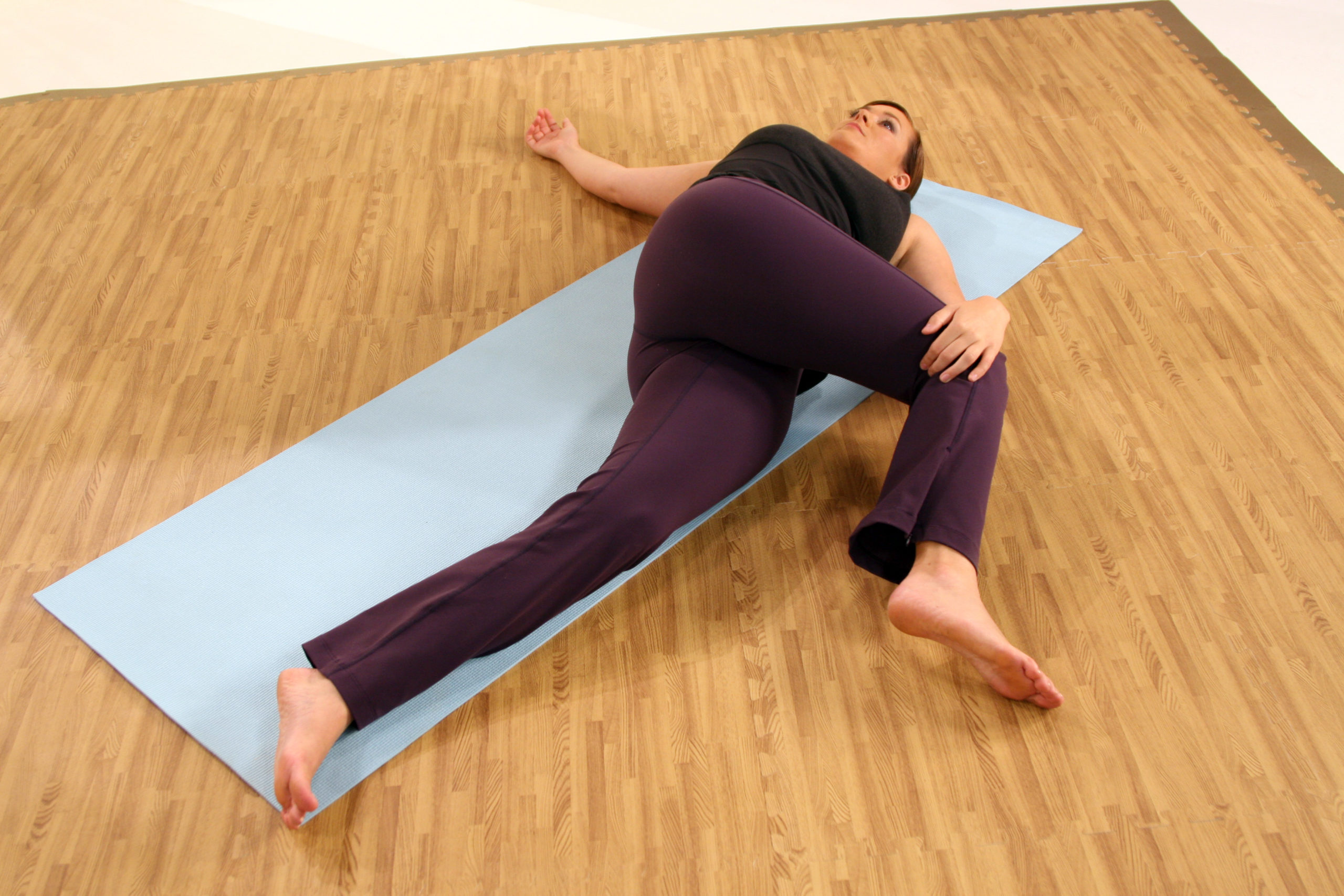This article, originally written in March 2010 was updated in March 2020 to include a new video snippet, expanded resources, and light editing.
I'm betting there are plenty of core exercises you aren't doing, but today we're going to talk about the BEST one you're not doing.
I've taught exercise for a zillion years now, and I have seen people crunch, flex, strain, bulge, and jut, all to get their stomachs in shape. Our approach is different. Instead of doing a ton of reps in one narrow range of motion, we use many movements to look for where the abdominal muscles aren't moving at all. We're also looking for where the pelvis (also attached to the abdomen) isn't moving, because the response of the abdominal muscles can best kick in when the pelvis and the ribcage are in the position to best sense the movements you're doing.
When we think of a strong stomach, we usually picture the long, up-and-down "washboard" abdominals (rectus abdominus), but it's actually your oblique and transverse abdominal muscles (they run right to left and on diagonals) that give you a waist.
Looking trim in the mid-section is a great bonus, but keep in mind why core movement is key. From the functional (can you move your body well to do the tasks you want to do), to the musculoskeletal (are your vertebral column and spinal discs being stabilized well), to the cardiovascular (how do local core and pelvis movements relate to local blood distribution and arterial stiffness and diameter), how your waist works is so much more important than how your waist looks.
We sit. A lot. And this repetitive stiffness in posture can result in our waist muscles losing their ability to lengthen. Waist muscles need to lengthen or else their stiffness prevents our midsection, and the spine, nerves, connective tissue and the arteries within, from getting the movement they all need.
Try this simple Spinal Twist:
Lie on your back and bring one knee up over the hips. Then, rotate your pelvis to lower your knee toward the ground, leaving the upper body where it started, as best you can. When the waist is stiff, you might find yourself rolling the entire torso to get the knee to the floor.
When the spine and shoulders all rotate over with your hips, this is a roll. When your shoulders, chest, and ribcage can stay planted while you move your pelvis, this is a twist. See how they're different? A twist moves your waist muscles so that they get better at moving; you don't want to be rolling during a twist if you're doing the move to create change in your waist. If you find that you are rolling, do this exercise every day, really focusing on keeping the upper body in place. Even if your pelvis doesn't go very far in a twist, at least you're starting to tug on your midsection, rather than always moving around sedentary areas.
Prefer a video? Here's a snippet from Nutritious Movement Improvement: Your 12-Week Body Boost. It includes the modified and bolstered spinal twist I recommend in Diastasis Recti and Move Your DNA.
You can find the Spinal Twist and 17 other of our favorite "daily moves" on our Movement Multivitamin DVD/download. Read more on core strength and restoration in Diastasis Recti. If you like moves broken down quite a bit, find more like the video above in our digital Nutritious Movement Improvement: Your 12-Week Body Boost course.

